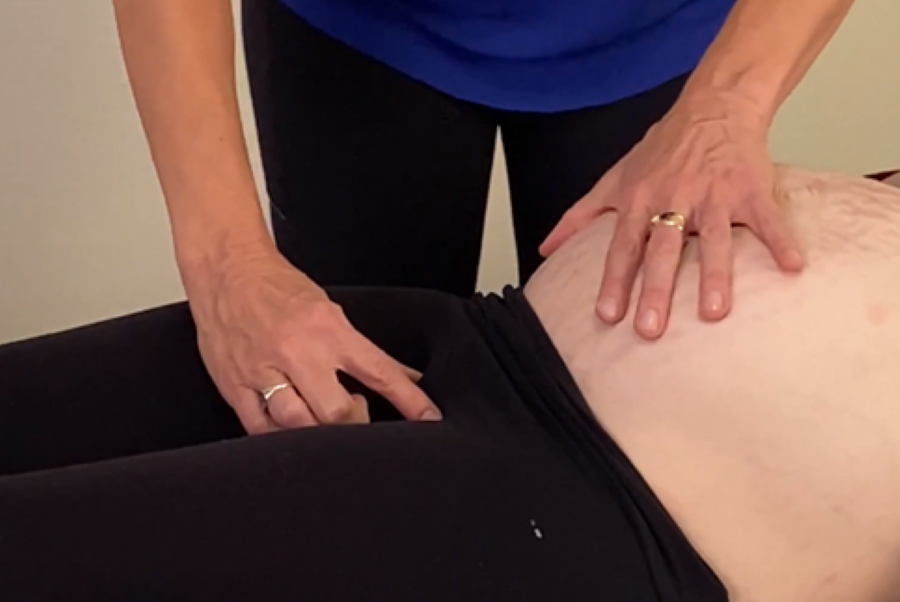3 Assessments to Best Prepare Clients for Birth
Prepare Clients for Birth with these 3 Key Assessments
A Perfect Opportunity to Prepare Clients for Birth
Some therapists hesitate to work with pregnant clients because they don’t know what to do and don’t want to hurt the baby, but there are 3 key assessments we can use to best prepare clients for birth. Most pregnant people come to therapy because they are experiencing pain. Pregnancy can exacerbate any dysfunction already present in the body. As therapists, we are primed to help them with their dysfunctions, just like we do with all our other clients. However, we are also in a position to not only address our client’s dysfunction, but to also help them prepare their body for birth.
3 Assessments to Prepare Clients for Birth
In my labor prep sessions, I address 3 main areas of the body to prepare clients for birth and teach my clients how to best push during labor given the specific needs of their body.
Getting Baby Into Position
The first main area to assess to prepare clients for birth is the abdomen and uterine mobility to ensure the baby can get into the best position possible for birth. We want baby’s head in the midline of the pelvis by the pubic bone as this is the best position for it to be in before going into labor. Uterine restrictions, lower abdominal fascial restrictions, and psoas tightness can all inhibit a baby’s ability to position itself ideally for birth. An asynclitic presentation, where the baby’s head comes into the pelvis crooked, will create a longer and more challenging birth.
After the first trimester, you can assess for uterine restrictions by gently moving the uterus side to side and doing different release techniques on the uterus. Releasing any restrictions in the uterine ligaments will help allow the baby to get into the best position possible before the start of labor.
Aligning the Pelvic Bones
The next area to assess to prepare clients for birth is the pelvic bones. The pelvic bones need to move to open up for the baby’s passage. If the bones are misaligned, movement may be more restricted and challenging. Making sure the pelvic inlet and outlet can adjust and the pelvic bones are normal and not hard can facilitate a smoother birth. Hardened bone that has been injured or impacted in some way, like through a fall, loses its spongy quality and does not move as freely as normal bone. Compression is the key to releasing hardened bone and helping prepare clients for birth.
Releasing the Pelvic Floor Muscles
The final area to assess to prepare clients for birth is the pelvic floor muscles. Normal tone and elasticity in these muscles allow the pelvic bones to move and enable the baby to move through the pelvis during birth. Increased tone in the pelvic floor muscles hinders the baby’s passage through the pelvis.
I think of the pelvic floor muscles as a stoplight for birth. Red light tone, muscles that have zero flexibility, will not allow a baby to come through unless an epidural is given. The lack of flexibility may result in tearing or the need for an episiotomy. Yellow light tone, muscles with some give but limited lengthening, will give some resistance to baby’s passage. Green light tone, which is what we want, are muscles with a nice springy quality that lengthens easily. When we have green light tone in the pelvic floor muscles this facilitates the smoothest, easiest passage for the baby and best prepares clients for birth. Pelvic muscle releases and treatment techniques taught in the Holistic Treatment of the Pregnant Body help bring muscle tone towards green light tone and can facilitate an easier birth.
Teaching Clients to Push
Once you get the muscles to that green light tone, you can help prepare your clients for birth by teaching them how to push – by allowing the muscles to elongate. Practicing this with your clients is key to helping them have muscle memory during labor, whether they get an epidural or not, and is a necessary step in preparing clients for birth.
Confidently Treat Your Pregnant Clients
Want to learn how to confidently assess, treat, and prepare your clients for birth? The Holistic Treatment of the Pregnant Body is a self-paced course packed full of information and treatment techniques that will allow you to treat with confidence. You will learn how to decrease tension in the uterine ligaments, align the pelvic bones, release the pelvic floor muscles, and better prepare your clients for birth.

